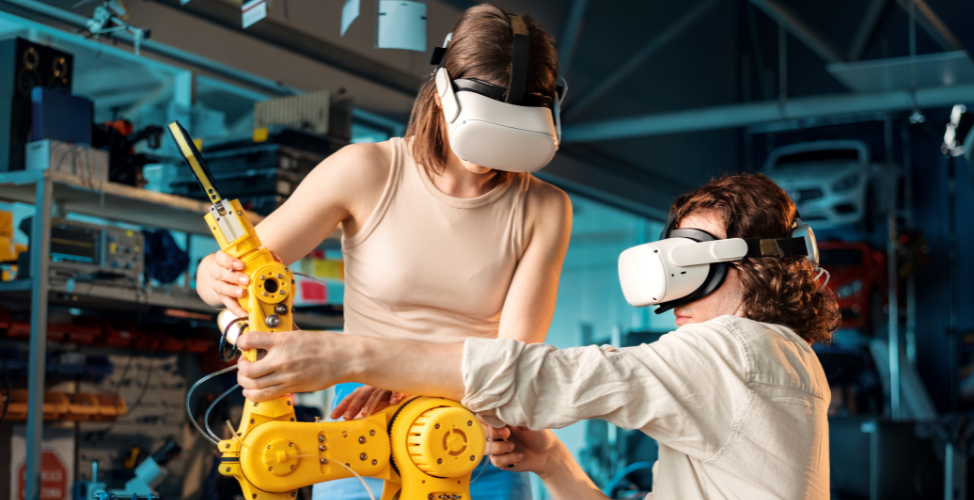Why Is AI So Popular Now? The Key Factors Behind Its Rise
Picture the buzz around self-driving cars, digital assistants that answer nearly any question, or a software model that crafts artwork from a handful of typed words. These feats would have seemed unthinkable just a few years back. Today, they’re everywhere, fueled by artificial intelligence. So why is AI so popular now? We’ll explore the root causes behind AI’s growing fame, looking at technology breakthroughs, changes in data availability, economic tailwinds, and more. We’ll keep each section brief, clear, and grounded in everyday terms, all while painting a comprehensive picture of AI’s remarkable rise.

Understanding the AI Boom
Why is AI so popular now? It’s not just hype—it’s the result of real progress on several fronts: smarter algorithms, more affordable hardware, an explosion of global data, and increased investment. But beyond the tech itself, AI is driving a deeper transformation. It’s changing how we interact with machines and pushing organizations of all sizes to rethink how they operate, innovate, and compete in today’s fast-moving world.
The Rise of Generative AI
Generative AI has quickly become the headline act. Tools now crank out original poems, software code, marketing copy, even unique images or music, all within seconds. These programs mimic creativity by learning patterns from huge data sets. They don’t ‘think’ as humans do, but they replicate certain skills so convincingly that they might fool you into thinking there’s a hidden spark of genius behind the keyboard.
- Language Models: Large language models generate human-like text, bridging the gap between everyday chatter and machine output. They scour billions of words to ‘understand’ grammar, context, and tone.
- Text-to-Image Creation: Another branch uses deep learning to morph plain text instructions into unique illustrations or photos. The results can be ‘mind-blowing’ for everyday viewers, fueling a wave of AI-based art.
Historical Milestones Fueling Popularity
This ‘craze’ isn’t spontaneous, it’s built upon years of research and computing progress:
- 1950s–1960s: AI’s earliest seeds were planted. Classic programs played checkers or solved algebra, pioneering the idea of ‘intelligent’ machines.
- 1970s–1980s: Expert systems used rules and logic, mostly at universities and labs, though limited computing power kept them from broad adoption.
- 1997: IBM’s Deep Blue beat chess champion Garry Kasparov, showing that machines could surpass humans at well-defined games.
- 2010s: The ‘deep learning’ breakthrough. Neural networks, especially with backpropagation, soared on powerful graphics processing units (GPUs). AI use cases boomed, from speech recognition to improved image classification.
- 2022 onward: Generative AI, large language models, and massive public interest soared. Chatbots reached record numbers of users within days of release.
Key Drivers Behind AI’s Popularity
Why is AI so popular now? Unlike many technologies that struggle to move from research labs to everyday use, AI made that leap—and did it with impact. Several forces are driving this surge: breakthroughs in algorithms, powerful new hardware, the rise of big data, and the growing availability of user-friendly AI tools. Just as important are the shifts in how businesses invest in and reorganize around technology, making AI not just a trend but a strategic cornerstone across industries.
See more: Generative AI for Retail: Raising Personalization and Engagement
Technological Innovations Driving AI Popularity
Breakthroughs in Deep Learning and Neural Networks
Deep learning is the rocket fuel behind modern AI. It harnesses multi-layered neural nets that act like human brains, sort of. These layers learn representations of data step by step, from simple shapes to complex structures. Early breakthroughs involved image recognition tasks, but the field soon advanced to:
- Natural Language Processing: Machines started deciphering text to glean meaning, sentiment, or context.
- Speech Recognition: Systems now transcribe your voice commands with surprising accuracy.
- Advanced Decision-Making: AI algorithms can analyze massive sets of structured or unstructured data, spotting hidden correlations or patterns.
Why is AI so popular now? It’s largely due to major advances in mathematics combined with powerful hardware that can process massive amounts of data at lightning speed. This synergy has unlocked new possibilities, pushing organizations across industries—whether in healthcare, retail, or finance—to adopt advanced analytics and AI-driven solutions at an unprecedented pace.
Enhanced Hardware and GPU Advances
People often forget that AI depends on computing muscle. In the past, servers lacked the capacity to run complex deep-learning models at scale. Then came GPUs, specialized chips originally meant for high-end gaming. Their parallel architecture processed data in bulk. It slashed training times from months to days, making bigger and bolder models possible.
- More Memory: Modern GPUs can handle massive data sets without choking up.
- Lower Cost: Cloud services like AWS or Google Cloud let you rent advanced GPUs by the hour, so even smaller teams can experiment.
- Edge Devices: Some smaller AI tasks now run on handheld devices thanks to hardware optimizations.
The Data Revolution and Democratization of AI Tools
Big Data Availability and Quality
We live in an era of continuous data streams, like phone usage metrics, online purchase logs, or sensor readings from factories. This helps feed AI’s hunger for training sets. ‘Quantity’ matters a lot because AI learns patterns from examples. But ‘quality’ is just as critical. Poorly labeled or biased data leads to flawed predictions.
- Public Data Sets: Platforms like ImageNet or large text corpora gave researchers a common foundation, sparking an explosion of AI research success.
- Enterprise Repositories: Many big companies compile data lakes to unify structured and unstructured data, fueling analytics and training.
User-Friendly Interfaces and Generative AI Accessibility
Why is AI so popular now? One big reason is accessibility. You no longer need a PhD in machine learning to experiment with AI tools. Thanks to low-code/no-code platforms, drag-and-drop interfaces, and pre-trained models, even beginners can dive in. Generative AI takes this even further by responding to simple, plain-language instructions—creating custom text or images on demand. This ease of use makes AI feel approachable and useful to everyone, from global enterprises to small businesses and solo creators, fueling its rapid rise in popularity.
Economic and Business Forces Behind AI Adoption
Strategic Investments and Market Disruption
AI has become a central pillar for any forward-thinking business strategy. Investors are pumping billions into AI startups, while established enterprises are forming specialized AI divisions or acquiring nimble AI-based companies. The rationale is simple:
- Competitive Edge: AI drives personalization, automation, and operational insights that can’t be matched by older approaches.
- Innovation Ecosystem: AI breakthroughs beget new solutions, from automated chatbots to advanced predictive maintenance systems.
Many organizations rely on or plan to integrate digital commerce solutions that harness AI for personalized shopping experiences and improved inventory management. This synergy underscores the value of AI in modern digital strategy.
Cost Efficiency and Automation Benefits
Retailers, banks, and manufacturers all see AI as a cost-cutting machine. By automating repetitive tasks, like data entry, invoice processing, or basic customer service, AI frees employees to tackle higher-value projects. Over time, that not only reduces overhead but also fosters innovation since staff can devote attention to strategic thinking and new offerings.
- Predictive Analytics: AI can forecast trends or anomalies, helping businesses optimize inventories or detect fraud early.
- Workflow Automation: Integrated systems cut out redundant steps, leading to better product quality and faster turnaround.
Future Outlook: The Next Wave of AI Innovation
What lies ahead? Experts foresee AI forging new paths into nearly every industry. Companies are building advanced solutions, from specialized robotics in healthcare to ‘intelligent’ chat solutions in banking. Indeed, the best is yet to come.
Watch more: AI Terms: 50 Terms Every Beginner Need To Know
Cross-Industry Integration and Emerging Applications
As AI matures, new frontiers beckon:
- Healthcare: Real-time symptom checks, AI-augmented diagnoses, personalized treatments.
- Manufacturing: Intelligent automation, predictive maintenance to minimize downtime.
- Finance: Robo-advisors, precise risk modeling, personalized product recommendations. For businesses keen on advanced finance solutions, exploring digital banking services might be the next step.
- Supply Chain: AI-driven route optimization, dynamic pricing, real-time tracking.
Each of these expansions is propped up by the synergy between AI and cloud computing solutions, for instance, Cloud services that swiftly adapt to surges in training demands.
Balancing Innovation with Robust Governance
Why is AI so popular now? Its ability to transform industries, boost efficiency, and generate human-like content has captured global attention. But with this rise comes real concerns. No technology is without risks—and AI brings challenges around data privacy, biased decision-making, and misinformation from generative models. As adoption grows, society must establish clear policies to ensure accountability and safety. Some key guidelines include:
- Transparent Data Practices: Let users see how data is used and how AI-based decisions arise.
- Ethical Oversight: Ensure AI systems treat all demographics fairly, with inclusive training sets.
- Cybersecurity: Guarding AI pipelines from malicious actors is vital. Organizations tackling vulnerabilities often rely on specialized cyber security solutions.
We can unlock AI’s full potential while respecting user rights and broader social well-being by balancing innovation with checks.
SmartOSC: Leading Digital Transformation in the AI Era
AI alone doesn’t magically fix business challenges, it’s part of a comprehensive digital roadmap. At SmartOSC, we’ve guided brands and organizations through crucial digital transitions for over 18 years. Whether it’s building eCommerce solutions, orchestrating enterprise-level digital transformation, or customizing advanced applications, we’re here to align AI with your objectives.
Our approach:
- Tailored Strategy: We start by understanding your unique environment, then crafting an AI roadmap that complements your technology stack and strategic goals. Learn more about how we shape direction via our strategy services.
- Expert Implementation: Through our deep partnerships with industry leaders like Adobe, Magento, and AWS, we deploy AI-powered commerce or cloud solutions that can seamlessly scale.
- Human-Centric Experience: Technology is only as good as the user experience. We bring human-centered design to the table, courtesy of our experience practice, ensuring your AI-based platform resonates with real users.
- Ongoing Optimization: The AI landscape evolves quickly. We equip your teams with tools, training, and resources to keep pace. Our Business Operation & Optimization solutions can help you gather feedback, refine algorithms, and measure ROI over time.
Throughout this journey, whether it’s setting up an AI-driven recommendation engine for an online store or building a custom enterprise platform in synergy with advanced AI features, SmartOSC stands out as a collaborative partner. Our end-to-end approach will let you harness AI’s strengths while sidestepping the usual pitfalls of integration complexity or data mismanagement.
Conclusion
The question persists: why is AI so popular now? Simple, it’s not one factor, but many. Rapid leaps in algorithms, hardware power, the surge of big data, and the unstoppable wave of economic incentives all collide to form a perfect storm. More than hype, AI rewrites how we live and work, from real-time chats with generative models to industrial-scale transformations across countless sectors.
Looking ahead, robust governance and transparent ethics will shape AI’s potential. But the technology’s unstoppable momentum is clear: it’s no longer an ‘if’ but a ‘when.’ So if your organization is ready to ride this wave, exploring automation, personalization, or advanced analytics, SmartOSC is here to help you integrate AI into your grander vision. Contact us to find out how we can fuel your digital transformation and keep you firmly ahead of the curve.


